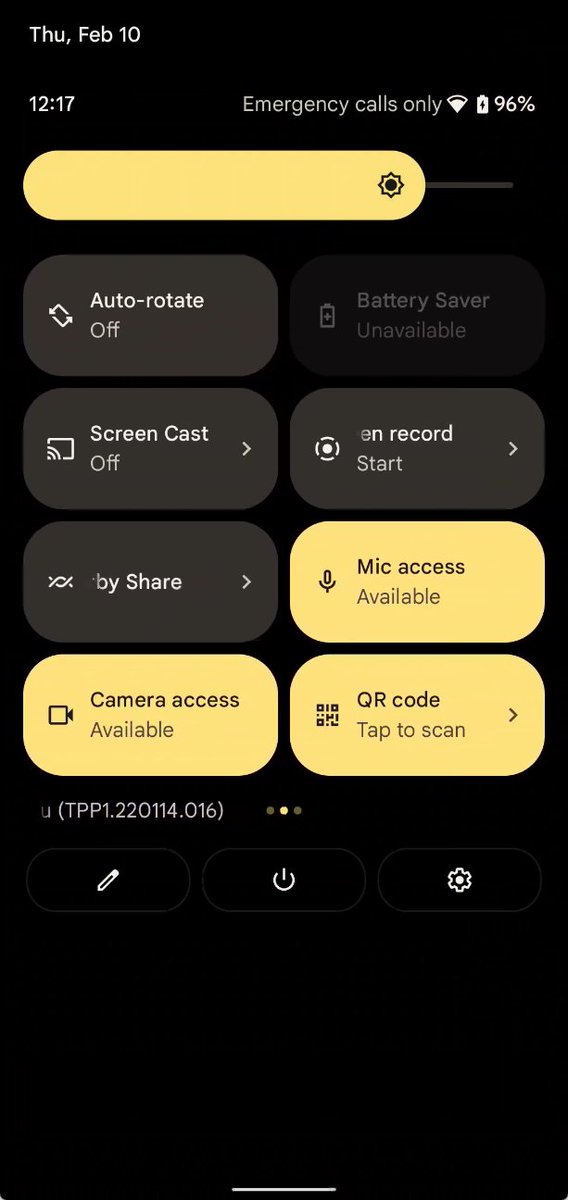
Surprise! Google hasn't even released Android 12L yet, but they're already moving on to Android 13. Today, Google released the first Developer Preview of Android 13, available for manual installation on Pixel (Pixel 4 or later), Android Emulator, or GSI.
android-developers.googleblog.com/2022/02/first-…
android-developers.googleblog.com/2022/02/first-…
Based on the release timeline that Google shared, there will be 2 Developer Previews and 4 Betas before the final release (likely in Q3). Platform Stability (finalized APIs/behaviors) will be reached in June 2022 with the third beta. 

Since Android 12L or Sv2 is being released alongside framework API level 32, Android 13 should be released alongside framework API level 33. The dessert name for Android 13, as you may have heard already, is Tiramisu (TM).
According to Google, DP1 brings the following features:
* System Photo Picker
* Per-app language preferences
* Nearby device permission for WiFi
* Faster hyphenation
* Themed app icons
* QS placement API
* Programmable shader
* OpenJDK 11
* Mainline modules for BT and UWB
* System Photo Picker
* Per-app language preferences
* Nearby device permission for WiFi
* Faster hyphenation
* Themed app icons
* QS placement API
* Programmable shader
* OpenJDK 11
* Mainline modules for BT and UWB
The new system photo picker extends the system document picker (Files app) with a new experience for picking photos and videos. Apps can call the photo picker APIs to prompt the user to pick media to share with the app, without the app needing permission to view all media files. 

Since the system document picker is part of the MediaProvider Mainline module, the new system photo picker will be backported to devices running Android 11 or later (excluding Android Go Edition).
Per-app language preferences will let users pick their preferred language on a per-app basis. For developers, this will reduce boilerplate code as apps won't need to implement their own language selection feature and can instead use the new platform API.
Google is decoupling the Wi-Fi scanning API from the location permission in Android 13. The new NEARBY_WIFI_DEVICES permission will let apps receive WiFi scan results without needing location access.
https://twitter.com/MishaalRahman/status/1475951671683526660
Android 13 improved hyphenation time by as much as 200%, so devs can implement hyphenation in TextViews with no impact on rendering performance.
Themed app icons are here! In Android 13, all app icons can be themed - not just Google apps! Devs need to just add a monochromatic app icon and tweak their adaptive icon XML to support this.

https://twitter.com/MishaalRahman/status/1483489686408638472

Android 13's new Quick Settings placement API will let apps prompt users to add their custom QS tile directly to the set of active tiles. This will make it easier for users to discover that an app offers custom QS tiles. 

To support creating advanced effects like blur, ripple, and stretch overscroll, Android 13 will support programmable RuntimeShader objects. The behavior of RuntimeShaders is defined using AGSL, or the Android Graphics Shading Language.
Google is refreshing Android's Core Libraries to align with the OpenJDK 11 LTS release, bringing both library updates and new programming language features for app and platform devs.
https://twitter.com/topjohnwu/status/1483572292584103940
Android 13 introduces updateable Mainline modules for the Bluetooth and Ultra-wideband stacks.
That's all the new features/changes/APIs in Android 13, at least according to the blog post. Of course, there's a LOT more that is left to be discovered. Keep an eye out on the @esperdev blog for my deep dive coming soon. I'll be doing live updates there and on Twitter!
• • •
Missing some Tweet in this thread? You can try to
force a refresh
















